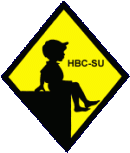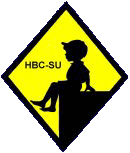
The United States was a largely rural country at the beginning of the 19th century and was still largely rural even at the time of the Civil War (1861-65). There is a modern perception that rural schools served a small minority of children. It is imprtant to understand that in the 19th century that most Americans lived in rural areas and it is these rural schools where most Americans were educated. At the begining of the century, this was 95 percent of the population. Only gradully did industrialization and urbanization begin to transform the country. The Civil War (1861-65) helped stimulate that process. Even by the end of the century, however, most Americans still lived in rural areas which meant that rural schools continued to be a very important part of the country's educational system. The United States in the 19th century probably had the world's most progressive system of public education for children in rural areas. Early Federal land legislation had provisions for assigning land parcels for school (1780s) as did the Homestead Act when America began moving west of the Mississippi River (1864). The principal of free public education was well established in America at a time when the British conceived of public education as dangerous or only appropriate as charity schools for indigents. In contrast, in the United States a portion of each parcel of land was reserved to finance a public school. As a result, as the frontier moved west, public schools were automatically financed from the initial settlement of the newc lands. The early rural schools were all elementary (primary) schools--usually one room schools where children of all ages were educated together. They came to provide an 8-year program. Few rural children in the 19th century progressed to high schools, all of which were all located in towns and cities. Even before the turn of the 20th century, America had become the greatest industrial nation in the world with booming cities. This huge industrial expansion was give a massive boost when industrialist Henry Ford introdyced the Model-T Ford. Ford's system of mass production would propel America to go beyond the largest industrial nation and approach the industrial production of most of Europe. An phnomenon that would largely determin the history of the 20 century. There was another impact of the Model-T. It mobility afforded by the automobile helped break down the division between rural and urban America. American finally crossed the divide as we finally see majority of Amricans living in urban areas (1920s). Rural schools continued to be important (1920s-30s), but by the end of the 1930s , school authorities were closing small rural chools as they were expensive to operate. Rather, authorities begn bussing rural schools to conolidated schools in towns. It needs to be stressed that this was not done to improve educational standard. Ut was a cost cutting measure. Although one consequence was that for the first time, rural children had access to secondary schools. The busses that did this of course are part of the impact of Henry Ford and the Model-T. And we can see all of this in the photographic record. Rural kids began dressing like city kids. They did not want to becalled hicks. Looking at the image, it is east to dismiss the standard of education. But the kids that came out of these schools knew how to read abd write with basic math skills. Compare this to our modern schools where all too many high school graduates in major cities are functionally illiterate and most are far below grade level performance.
The United States was a largely rural country at the beginning of the 19th century and was still largely rural even at the time of the Civil War (1861-65). There is a modern perception that rural schools served a small minority of children. It is important to understand that in the 19th century that most Americsns lived in rural areas and it is these rural schools where most Americans were educated. At the begining of the century, this was 95 percent of the population. Only gradually did industrialization and urbanization begin to transform the country. The Civil War (1861-65) helped stimulate that process. Even by the end of the century, however, most Americans still lived in rural areas which meant that rural schools continued to be a vital part of the country's educational system.
The location of rural schools is of special importance. This was determined by the Northwest Ordinance (1787). It meant that public schools would be created throughout the country. This was at the time that he concept of educating the masses and the idea of public schools were very new concepts. It was launched at about the same time in Prussia and other German states and the United States. It is no accidental that they were both Protestant countries. But public education is part of the reason that America and Germany began their meteoric rise among the ranks of nations. Essentially developing their most important resource--their people. This was not a widely understood concept at the time. In part because the aristocrats governing countries were primarily concerned with how to extract wealth from an uneducated peasantry. Now while the Germans and Americans public education, their goals were different. King Fredrick II of Prussia was trying to figure out how to build an effective army in a small, poor kingdom. The Americans were trying to figure out to populate their new republic with a an educated population. But both America and Germany benefited from public education. There were differences. The Germans opened their schools in established villages. The Americans opened their schools in the middle of nowhere. The Northwest Ordinance mandated that every block of Western land included a parcel for a public school. And financed the building of the school at a time that state and local government had little money. The plot was far more than the school needed. So the land not needed for the actual school building could be sold to fiance the building of the school. This system was extended west of the Mississippi by the Homestead Act (1862). Of course we have no photography to illustrate these schools in 1787, but we do have images in the late-19th and early-20th century. They are where young Americans were educated in he 19th and early-20th century. Until the 1920s, the majority of Americans lived in rural areas.
The early rural schools were all elementary (primary) schools--usually one room schools where children of all ages were educated together. They came to provide an 8-year program. Few rural children in the 19th century progressed to high schools, all of which were all located in towns and cities.
Even before the turn of the 20th century, America had become the greatest industrial nation in the world with booming cities. Industry helped to modernize agricultyure an increase productivity. All kinds og lbor saving decices came out of industry to be markeed to farmers. This huge industrial expansion was give a massive boost when industrialist Henry Ford introduced the Model-T Ford. Ford's system of mass production would propel America to go beyond the largest industrial nation and approach the industrial production of most of Europe. An phnomenon that would largely determine the history of the 20 century.
There was another impact of the Model-T. It mobility afforded by the automobile helped break down the division between rural and urban America. American finally crossed the divide as we finally see majority of Amricans living in urban areas (1920s).
Looking at the image, it is east to dismiss the standard of education. But the kids that came out of these schools knew how to read and write with basic math skills. Compare this to our modern schools where all too many high school graduates in major cities are functionally illiterate and most are far below grade level performance.
Related Chronolgy Pages in the Boys' Historical Web Site
[Main Chronology Page]
[The 1900s]
[The 1910s]
[The 1920s]
[The 1930s]
[The 1940s]
[The 1950s]
[The 1960s]
[The 1970s]
[The 1980s]
[The 1990s]
[The 2000s]
Navigate the Relate Boys Historical Clothing Style Pages
[Main country page]
[Long pants suits]
[Short pants suits]
[Lederhosen]
[Kneesocks]
[Eton suits]
[Jacket and trousers]
[Blazer
[School sandals]
Navigate the HBC School Section
[Return to the Main U.S. Rural School Page]
[Return to the Main U.S. School Page]
[Return to the Main National School Page]
[Australia]
[England]
[France]
[Germany]
[Ireland]
[Italy]
[Japan]
[New Zealand]
[Poland]
[Singapore]
[Scotland]
[Singapore]
Navigate the Boys' Historical Clothing Web Page
[Return to the Main Ameruican rural school page ]
[Return to the Main Ameruican public elementary/prumary school page ]
[Return to the Main United States page ]
[Activities]
[Chronology]
[Clothing styles]
[Countries]
[Debate]
[Economics]
[Garment]
[Gender]
[Hair]
[History]
[Home trends]
[Literary characters]
[School types]
[Significance]
[Transport and travel
[Uniform regulations]
[Year level]
[Other topics]
[Images]
[Links]
[Registration]
[Search]
[Tools]
[Return to the Historic Boys' School Home]
